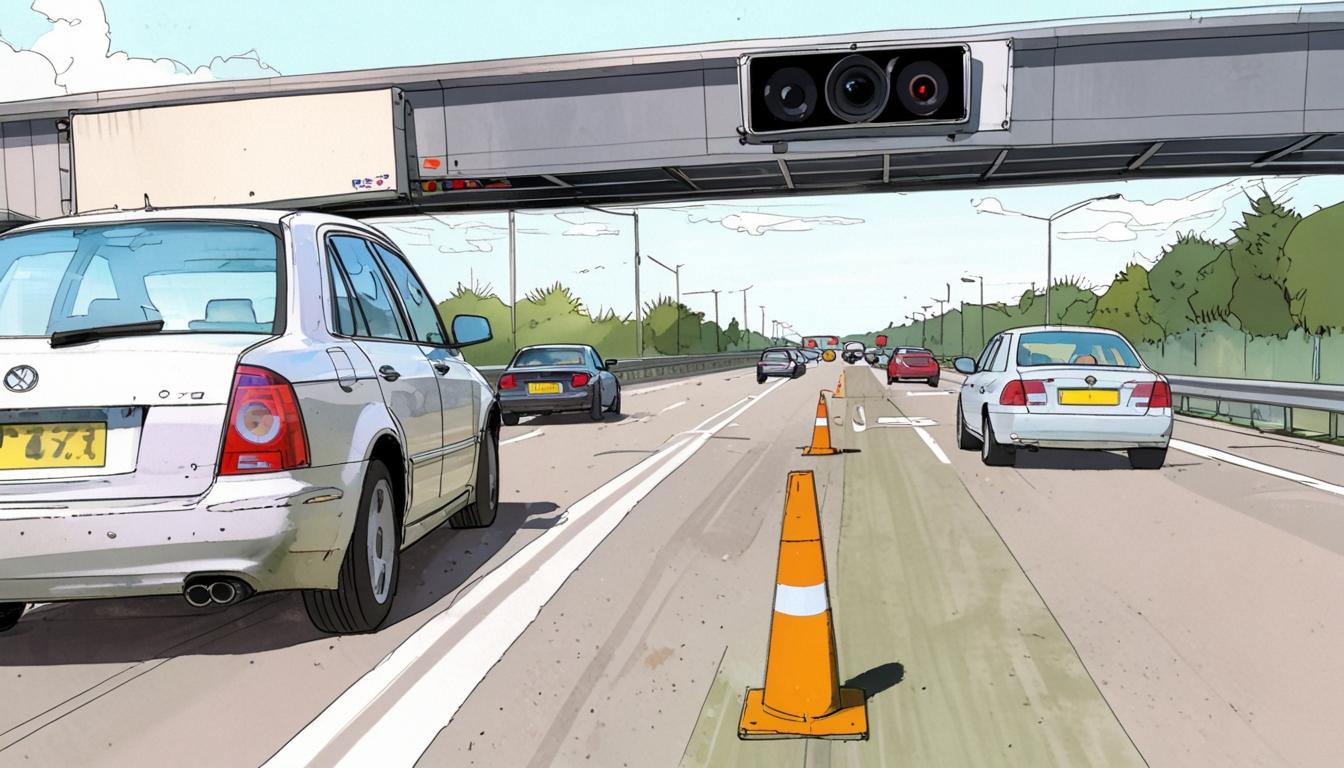Cameras targeting dangerous tailgating on UK motorways have identified nearly one million instances of this reckless behaviour during pilot trials conducted by National Highways. This groundbreaking initiative, which unfolded between 2017 and 2021, sought to address a significant concern on British roads: the perilous habit of following other vehicles too closely.
Data obtained from National Highways through a Freedom of Information request revealed that a staggering 844,060 potential tailgating offences were recorded across four major motorways. The findings come at a time when anecdotal reports indicate growing frustration among drivers, many of whom feel increasingly threatened by aggressive tailgaters. In a survey, nearly a third of motorists stated they experience tailgating at least once a week, with half asserting that such offences have become more common in recent years.
National Highways has highlighted that tailgating contributes to one in eight crashes on motorways and major A roads. This dangerous behaviour falls under the umbrella of 'careless driving', which is punishable by a minimum fine of £100 and three penalty points, while more serious incidents can lead to court action and potential disqualification from driving. Despite the alarming figures gathered during these trials, enforcement remained minimal; only during the last trial, conducted on the M1, did repeat offenders receive warning letters to alter their driving habits.
The evolution of tailgating camera technology has seen trials executed over several years, starting with an initial experiment on the M3 in late 2017 that uncovered 237,648 possible offences. Subsequent trials on the M6 and M20 recorded 319,787 and 226,282 violations, respectively. When a further trial concluded in late 2021, it was revealed that 60,343 tailgating incidents had been detected on the M1 near Northampton, suggesting an alarming trend in driver behaviour.
Experts argue that while some instances of tailgating may be unintentional, primarily stemming from drivers’ lack of awareness regarding safe distances, many see it as a manifestation of aggressive driving. Graham Conway, Managing Director at Select Car Leasing, indicated that a significant proportion of drivers perceive tailgating as a deliberate display of aggression, not merely a careless mistake. Over two-thirds of surveyed motorists believe that more stringent enforcement is necessary, highlighting a call for a wider rollout of this technology to mitigate the danger posed by tailgaters.
Yet, despite the promising results from the trials, there are currently no plans to establish a permanent system of tailgating cameras across the UK. A spokesperson for National Highways emphasised that any decisions to enforce violations would ultimately rest with local police forces, expressing a commitment to road safety while acknowledging the challenges inherent in addressing driving behaviours.
The notion of bringing about safer motoring experiences has gained traction in parallel with various initiatives targeting disruptive driving practices. Motorways across the country have seen the introduction of high-tech systems, including AI-powered cameras capable of detecting multiple infractions every 90 seconds. These advancements signal a move towards more proactive road safety measures, underscoring the urgency to address habits that lead to accidents and potential fatalities.
As public concern over tailgating grows, the success of current camera trials may lead to increased scrutiny of driving behaviours on UK roads, resulting in new policies aimed at fostering safer driving practices. Although the technology has proved effective in capturing offences, the challenge lies in translating this data into tangible changes in driver behaviour, ensuring that the roads become safer for all.
In summary, while the technology exists to combat tailgating effectively, the path toward its implementation as a widespread deterrent remains uncertain, resting on the collective will of authorities and drivers alike to embrace safer motoring practices.
Reference Map
- Paragraphs 1, 2, 3, 4, 5, 6, 7, 8, 9
- Paragraphs 2, 4, 6
- Paragraphs 2, 4, 6
- Paragraphs 2, 4, 6
- Paragraph 7
- Paragraph 6
- Paragraph 7
Source: Noah Wire Services
